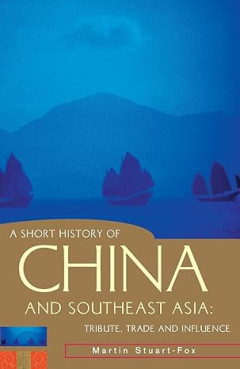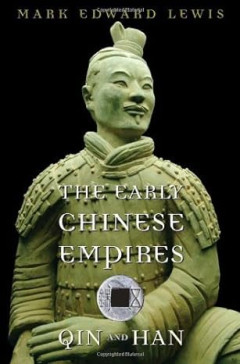Ditapis dengan

E-book Poetry of Loss and the Early Medieval Chinese Court of the Warlord Cao…
Upon the fall of the Han empire, the warlord Cao Cao (155–220) established a new political domain. The Cao court became known for its accomplished writers, including the warlord himself and two of his sons, Cao Pi (187–226) and Cao Zhi (192–232). Afflicted by sibling rivalry and an epidemic, these poets distinguished themselves by writing about frustration, sorrow, and death. Yet, as obse…
- Edisi
- -
- ISBN/ISSN
- 9781802701777
- Deskripsi Fisik
- 144 halaman
- Judul Seri
- -
- No. Panggil
- 931 SHI p

E-book A Short History of China and Southeast Asia: Tribute, Trade and Influence
This informative but concise history of China and Southeast Asia is perfect for travelers, students, teachers, and businesspeople. Portable and attractively designed, it includes color illustrations, maps, and a brief history of the region. Explored are relations between China and Southeast Asia across two millennia; patterns of diplomacy, commercial networks, and migration; and how these have …
- Edisi
- -
- ISBN/ISSN
- 9781864489545
- Deskripsi Fisik
- 289 halaman
- Judul Seri
- -
- No. Panggil
- 931 STU a

E-book The Early Chinese Empires: Qin and Han
In 221 B.C. the First Emperor of Qin unified what would become the heart of a Chinese empire whose major features would endure for two millennia. In the first of a six-volume series on the history of imperial China, Lewis highlights the key challenges facing the court officials and scholars who set about governing an empire of such scale and diversity.
- Edisi
- -
- ISBN/ISSN
- 9780674057340
- Deskripsi Fisik
- 334 halaman
- Judul Seri
- -
- No. Panggil
- 931 LEW t
 Karya Umum
Karya Umum  Filsafat
Filsafat  Agama
Agama  Ilmu-ilmu Sosial
Ilmu-ilmu Sosial  Bahasa
Bahasa  Ilmu-ilmu Murni
Ilmu-ilmu Murni  Ilmu-ilmu Terapan
Ilmu-ilmu Terapan  Kesenian, Hiburan, dan Olahraga
Kesenian, Hiburan, dan Olahraga  Kesusastraan
Kesusastraan  Geografi dan Sejarah
Geografi dan Sejarah